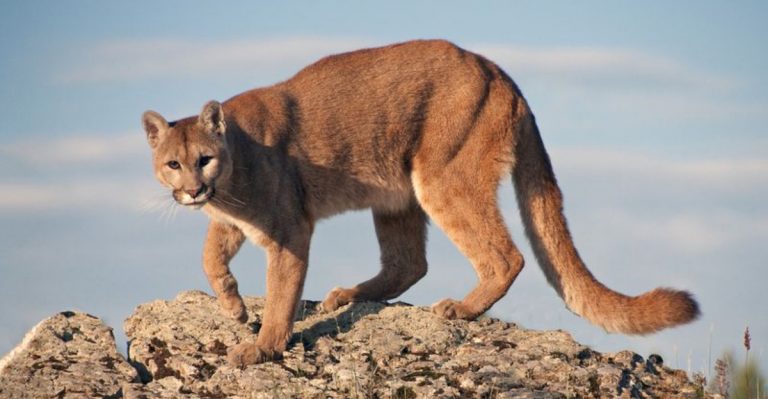13 States Where You’re Most Likely To Get Bitten By A Rattlesnake
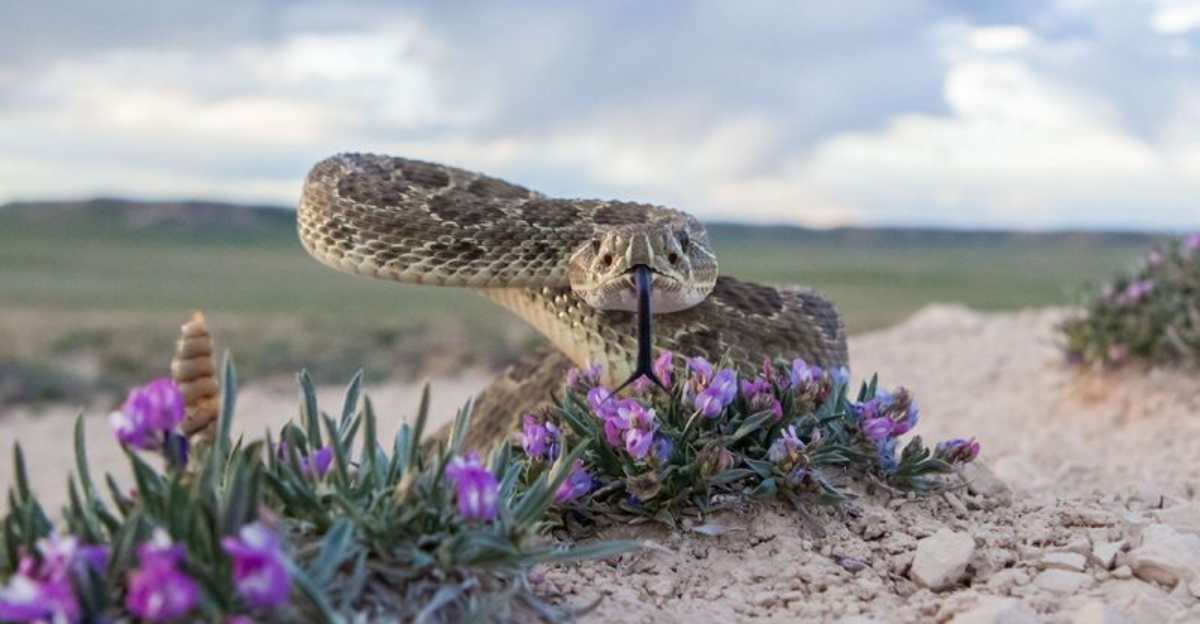
Rattlesnakes are among North America’s most dangerous venomous snakes, with bites that can cause severe pain, tissue damage, and even death if left untreated.
While these reptiles generally avoid humans, encounters happen when we venture into their territory during outdoor activities.
Understanding which states have the highest risk of rattlesnake bites can help you stay alert and take proper precautions when exploring the great outdoors.
1. Arizona

Nicknamed the rattlesnake capital of America, Arizona hosts 13 different rattlesnake species – more than any other state. The scorching desert climate creates perfect conditions for these venomous reptiles to thrive.
Hikers in the Sonoran Desert frequently report close calls with Western Diamondbacks, especially during spring and fall when snakes are most active. Always stay on marked trails and wear proper hiking boots when exploring.
2. Texas
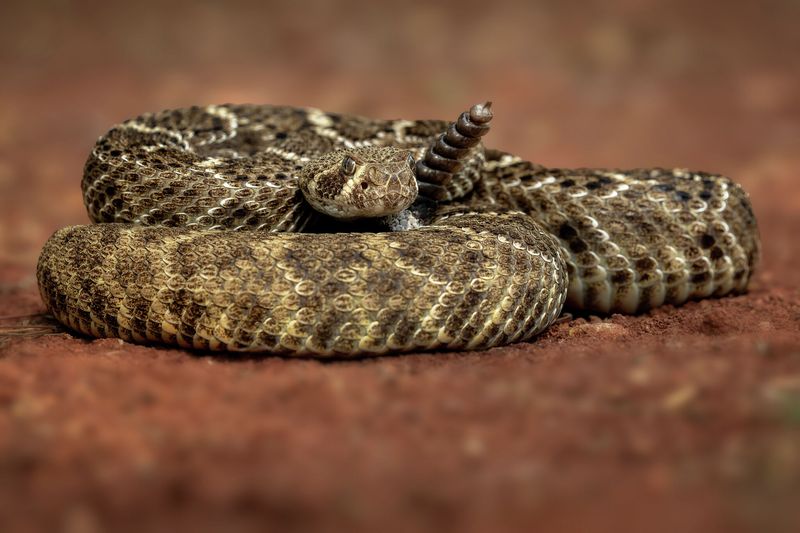
Everything’s bigger in Texas – including the rattlesnake population! The Lone Star State’s diverse landscapes support at least 10 rattlesnake species, with the Western Diamondback being most common.
Rural ranchers and farmers face the highest risk, especially in West Texas and the Hill Country. The annual Sweetwater Rattlesnake Roundup demonstrates just how abundant these reptiles are throughout the state’s vast territory.
3. Nevada
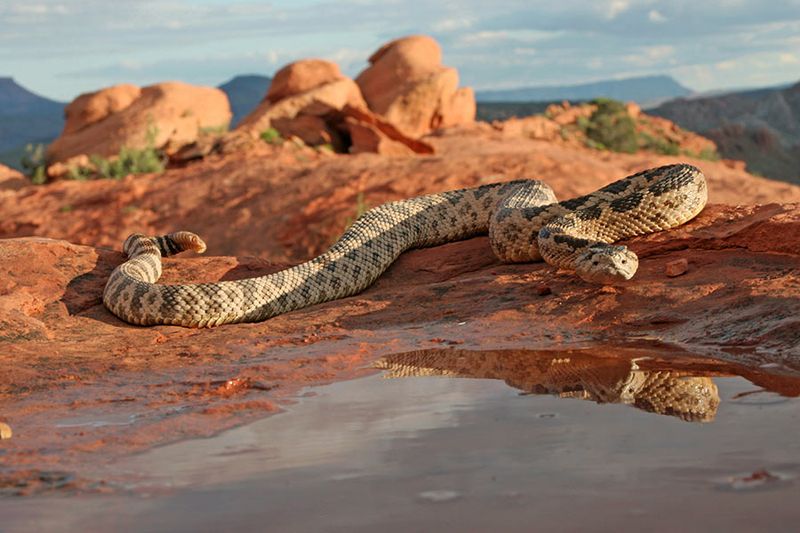
Hikers beware! Nevada’s rocky terrain harbors numerous rattlesnake species that blend perfectly with the landscape. The Great Basin Rattlesnake rules these deserts, often surprising unsuspecting visitors who venture off-trail.
Rock climbers face particular danger, as rattlesnakes frequently sun themselves on warm surfaces or hide in crevices. Popular hiking areas around Las Vegas report dozens of rattlesnake encounters annually during peak season.
4. California
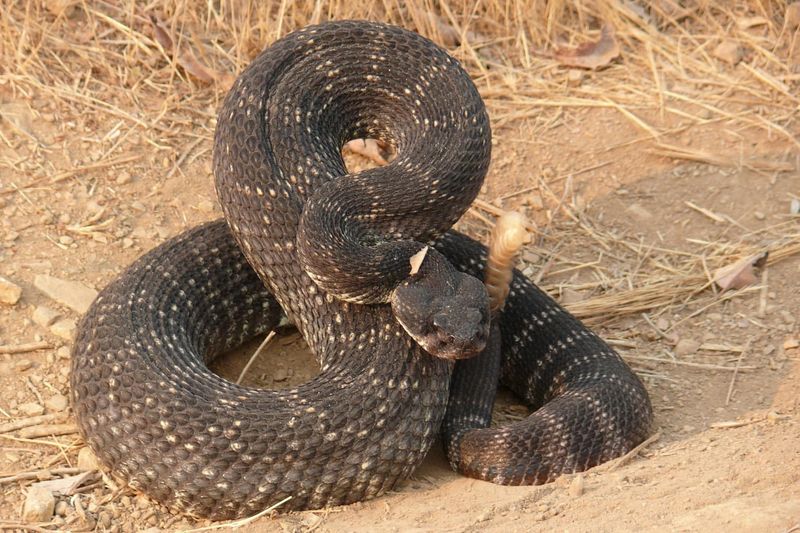
From the Mojave Desert to coastal chaparral, California’s diverse ecosystems support seven different rattlesnake species. The Southern Pacific Rattlesnake poses particular danger in populated areas, often venturing into suburban neighborhoods during drought conditions.
Mountain bikers in the San Bernardino range regularly encounter these reptiles sunning on trails. The notorious Mojave Green, with its potent neurotoxic venom, makes eastern California especially hazardous for outdoor enthusiasts.
5. New Mexico
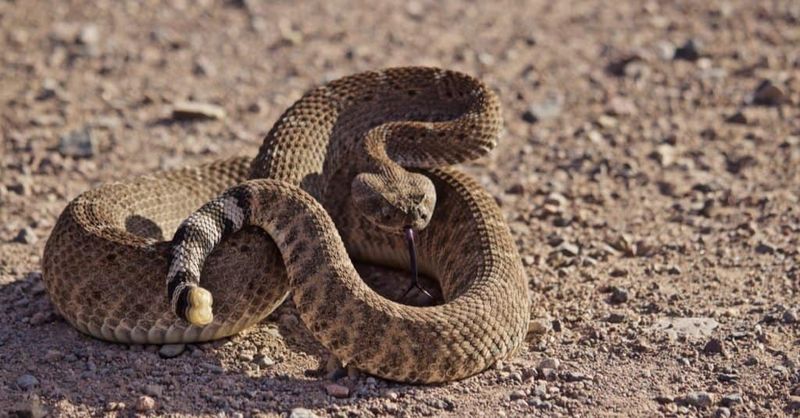
Ancient petroglyphs depicting rattlesnakes throughout New Mexico testify to their historical presence. Modern hikers face these same serpents while exploring the state’s breathtaking landscapes.
The Prairie Rattlesnake dominates the eastern plains, while Rock Rattlesnakes prefer the mountainous west. During summer monsoon season, rattlesnakes become more active and visible as they hunt rodents flushed from burrows by rain.
6. Colorado
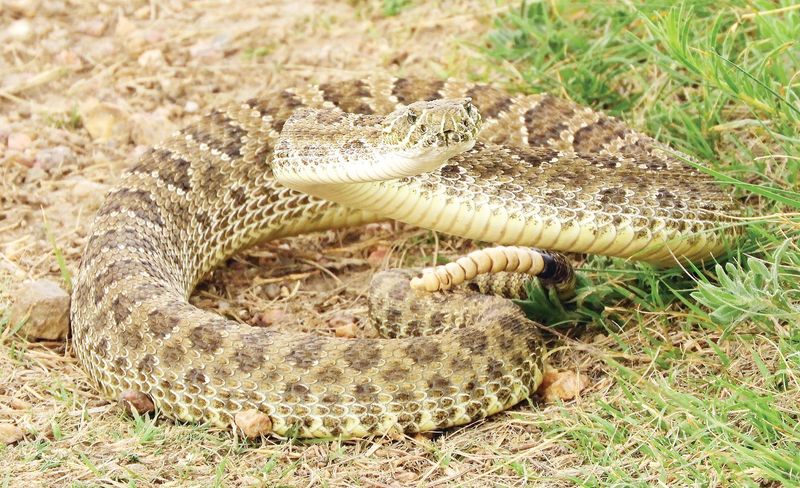
Surprise! Despite its snowy reputation, Colorado ranks high for rattlesnake encounters. The Prairie Rattlesnake thrives in the eastern plains and foothills, especially in popular recreation areas like Jeffco Open Space parks.
Mountain bikers and trail runners report the most close calls, particularly on south-facing slopes where snakes bask in morning sun. Colorado’s rattlesnake season peaks from April through October when temperatures are warm enough for these cold-blooded creatures.
7. Utah
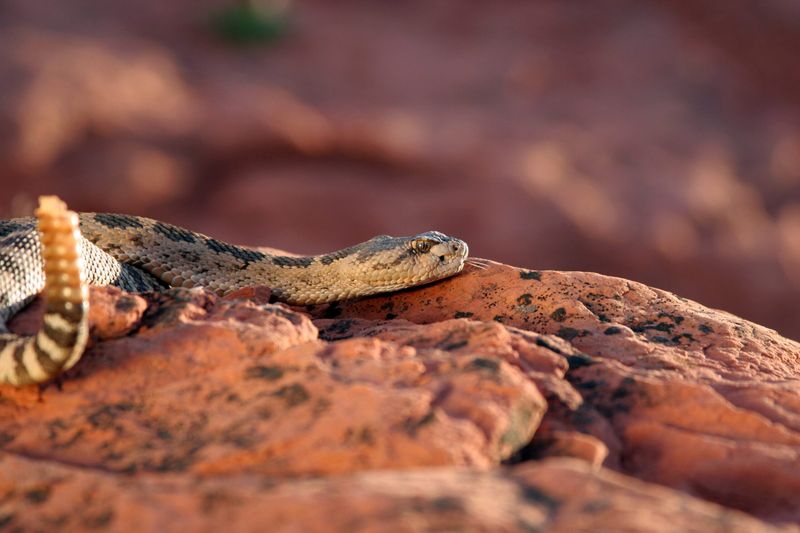
Utah’s spectacular national parks harbor more than just breathtaking views – they’re prime rattlesnake territory too. The Midget Faded Rattlesnake, despite its diminutive name, packs a seriously potent venom that concerns park rangers.
Rock climbers in places like Zion and Canyonlands face elevated risks when reaching into crevices. The Great Basin Rattlesnake frequently basks on sun-warmed slickrock, creating hazards for barefoot hikers exploring Utah’s iconic red rock landscapes.
8. Oregon
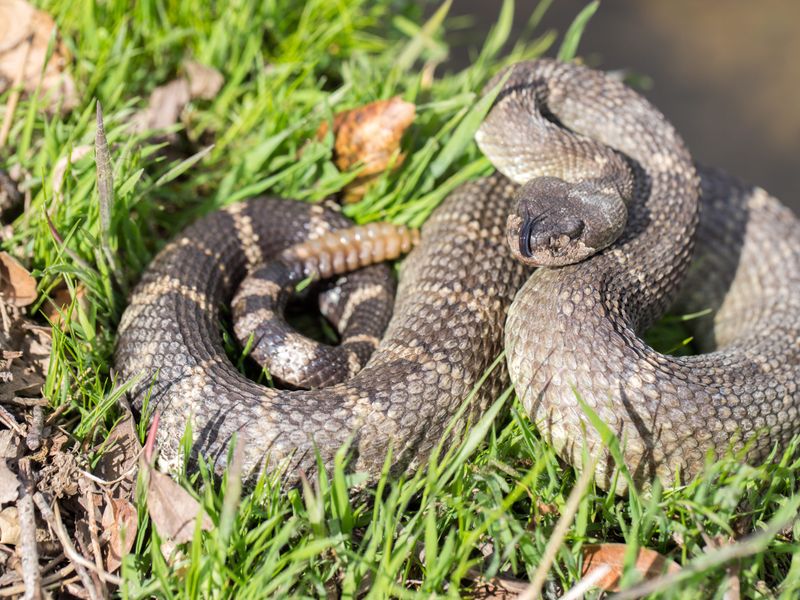
Eastern Oregon’s high desert presents a surprising rattlesnake hotspot that catches many visitors off guard. The Northern Pacific Rattlesnake thrives in this arid landscape, especially along the Columbia River Gorge and throughout the John Day Fossil Beds.
Vineyard workers in southern regions report frequent encounters during harvest season. River rafters face unique risks when camping on shorelines where rattlesnakes hunt rodents attracted to leftover food scraps.
9. Wyoming
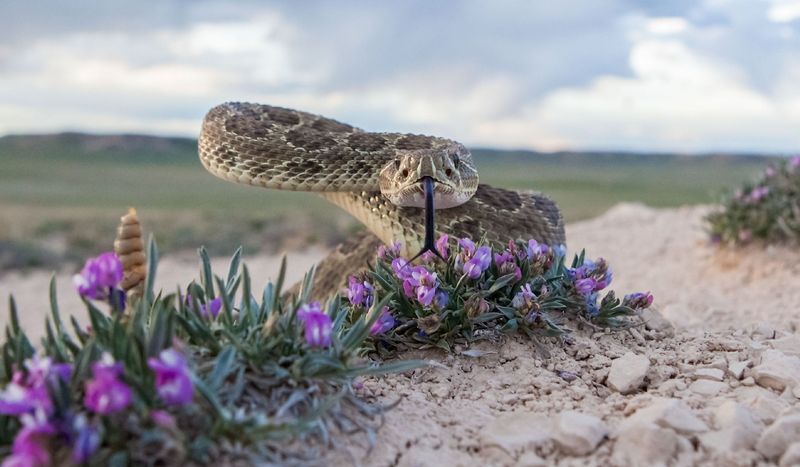
Wyoming’s rugged wilderness conceals a healthy population of Prairie Rattlesnakes that frequently surprise hikers and campers. The state’s combination of rocky outcroppings and grassy plains creates ideal habitat for these ambush predators.
Rock climbers in places like Vedauwoo face heightened risk when reaching blindly into cracks. Rattlesnake sightings increase dramatically during Wyoming’s brief but intense summer, when both snakes and humans emerge to enjoy the warm weather.
10. Idaho
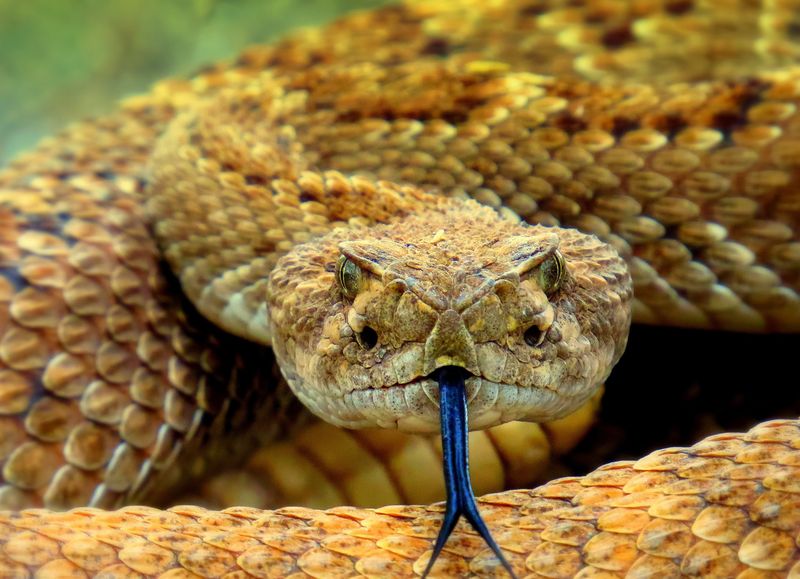
Idaho’s Snake River didn’t get its name by accident! The Western Rattlesnake flourishes throughout this region, especially in the rocky canyons and sagebrush plains of the southern portion of the state.
Farmers face heightened risk during harvest season when disturbing hidden snakes. Hell’s Canyon, the deepest gorge in North America, creates a microclimate where rattlesnakes remain active longer than in surrounding areas, increasing encounter probability for hikers.
11. Kansas
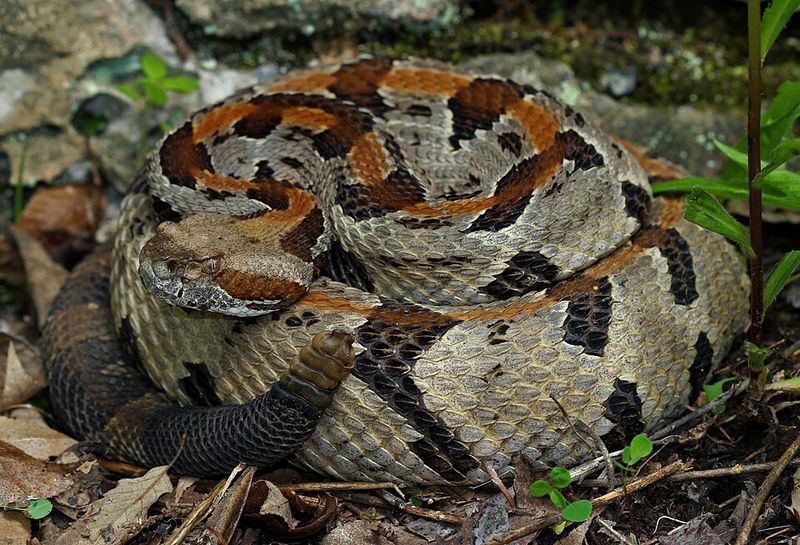
Kansas prairie lands harbor surprising numbers of rattlesnakes that thrive in the state’s open grasslands. The Timber Rattlesnake dominates eastern regions while Prairie Rattlesnakes rule the west, creating statewide risk for farmers and outdoor enthusiasts.
Hunters report frequent encounters during fall seasons when walking through tall grass. The Flint Hills region, with its rocky outcroppings and limestone ledges, provides perfect denning habitat, making it a particular hotspot for springtime rattlesnake emergences.
12. Montana
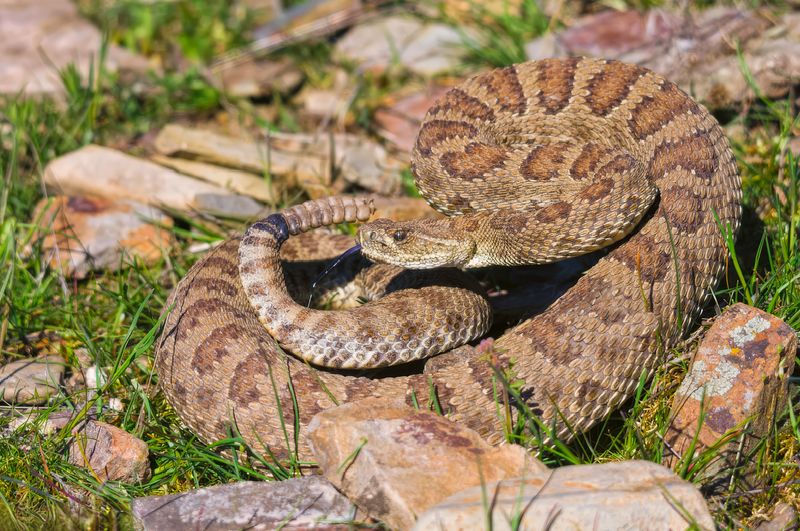
Montana’s eastern plains harbor significant Prairie Rattlesnake populations that surprise many visitors expecting only mountain wildlife. These hardy serpents survive Montana’s harsh winters by denning together in deep rock crevices, emerging en masse during spring.
Fossil hunters exploring badlands face elevated risk when reaching into eroded hillsides. Rattlesnake encounters spike during Montana’s brief but intense summer months, particularly in prairie dog towns where snakes hunt for their favorite prey.
13. Alabama
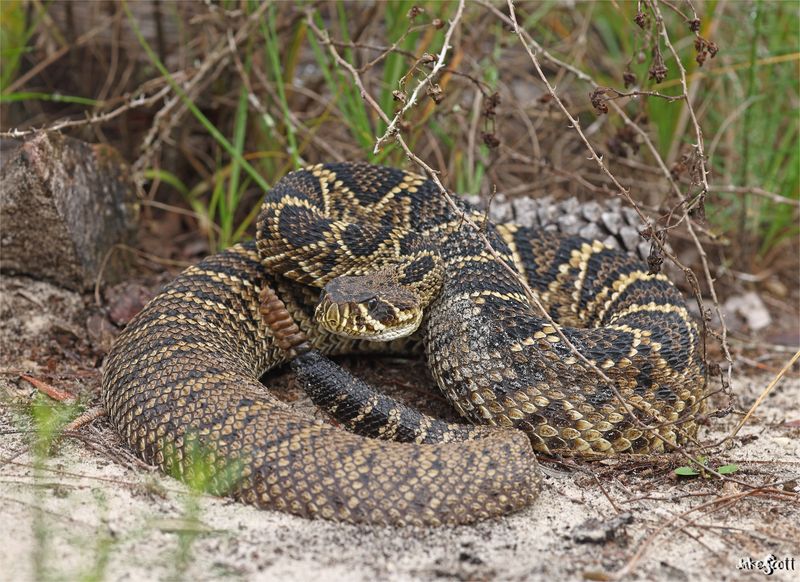
Alabama’s warm climate supports surprisingly robust rattlesnake populations, with the Eastern Diamondback and Timber Rattlesnake dominating different regions. These southeastern serpents grow larger than their western cousins, with Eastern Diamondbacks potentially exceeding seven feet in length!
Hunters and loggers face the highest risk when working in forested areas. Alabama’s extensive cave systems provide perfect winter hibernation sites, creating concentrated rattlesnake populations around these geological features.





